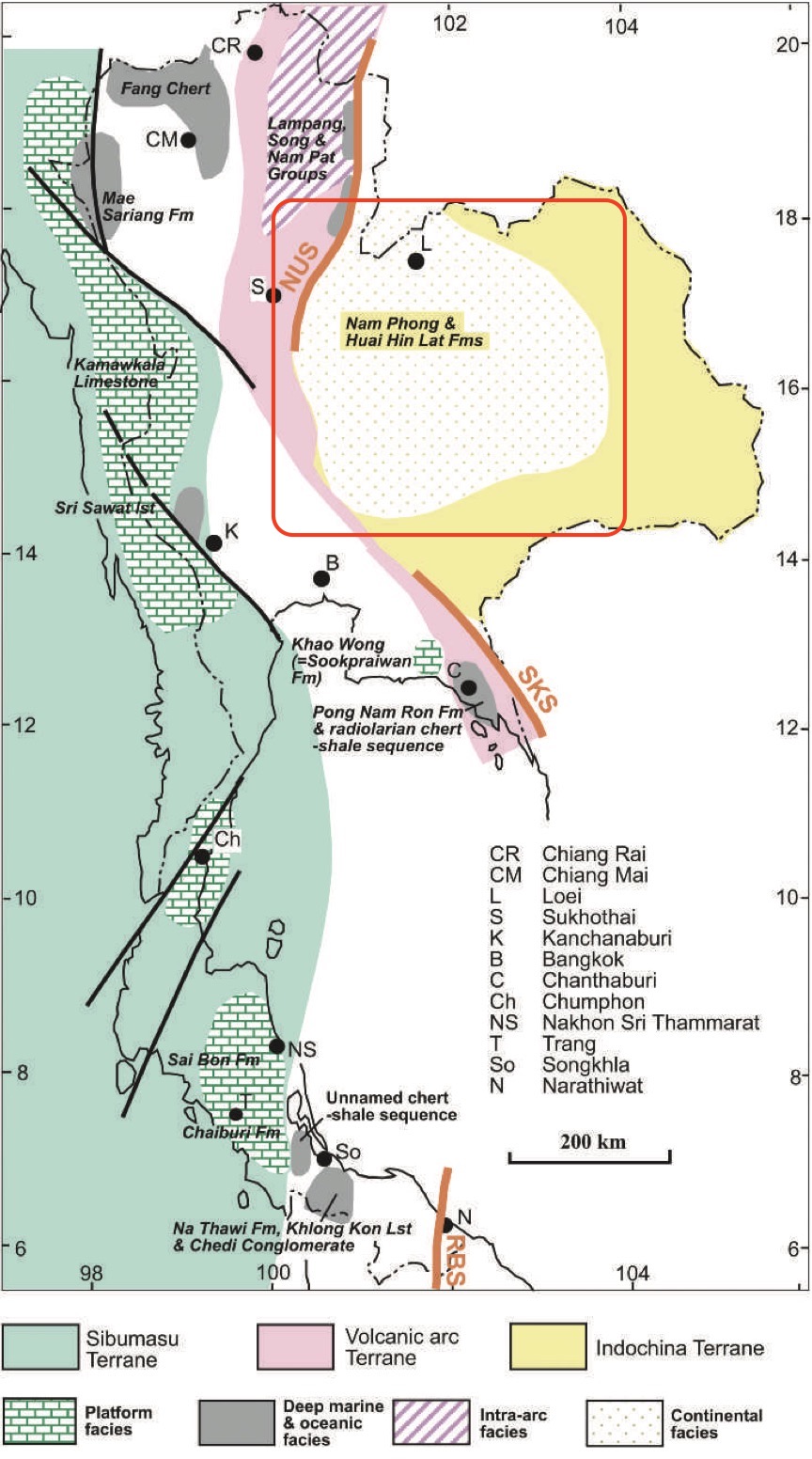Huai Hin Lat Fm
Type Locality and Naming
[Figure 1 : Generalized distribution of different Triassic sedimentary environments and some of the more important lithostratigraphic units, and their relations to the terranes. (The geology of Thailand, 2011) page 146]
Synonym: หมวดหินห้วยหินลาด
Lithology and Thickness
Relationships and Distribution
Lower contact
Upper contact
Regional extent
GeoJSON
Fossils
Reptiles are represented by the phytosaur Mystriosuchus sp., a genus which was originally described from the Norian Stubensandstein of Germany and subsequently found in the Norian sediments of Austria and Italy; Turtle and amphibian remains are also abundant, including Proganochelys ruchae and Cyclotosaurus cf. posthumus, respectively. A bone fragment of a Late Triassic plagiosauroid amphibian has also been found. Fishes include a ptychoceratodontid lungfish and the actinopterygians Colobodus cf. sargodon and Semionotus sp. They are very similar to European Upper Keuper fish genera.
Age
Depositional setting
Additional Information
